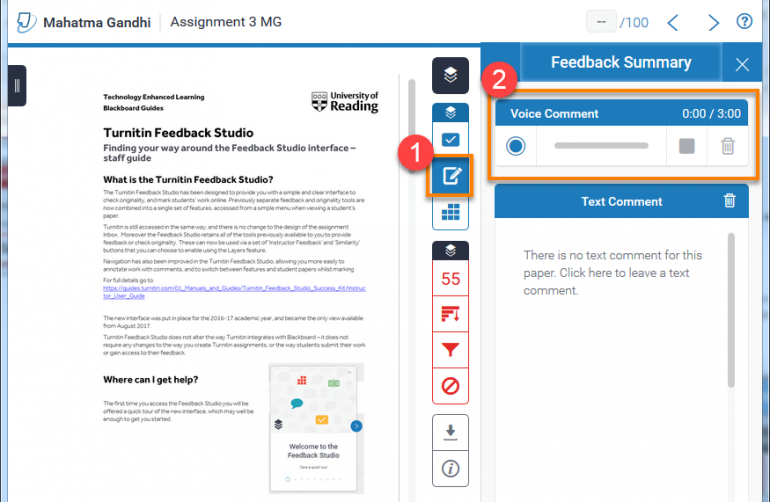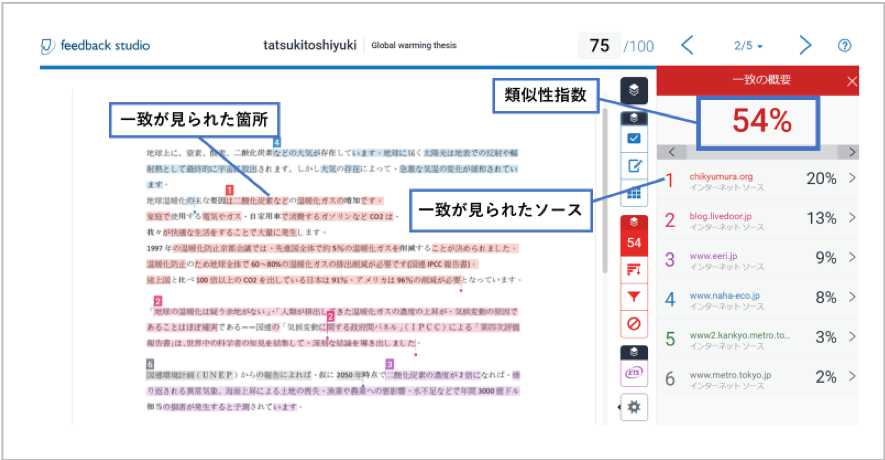
For instance, it is not wise to simply rely on the percentage of similarity index 38%, human intervention is must to rule out the facts by thorough inspection of each single matching.

The interpretation of originality reports can be tricky depending on the expertise of the team member. Before creating the originality reports, bibliography, quoted material, and small matches (words or percentage) should be excluded.

Turnitin or other similar software's produce “Originality Reports,” which is then interpreted by a person on the basis of the importance of the findings. Plagiarism detection is an academic judgment, which is depending on plenty of factors, and only expert academicians can do this job.
#TURNITIN SOFTWARE#
The Gill Rowell dismisses the myth that Turnitin is a “plagiarism detection software and clarifies the contribution that Turnitin can and cannot make to the detection and prevention of plagiarism.” In this study, we explore the misconception which is calling Turnitin “a plagiarism detection software.” It will be quiet sensible to recall it as “a text-matching tool” that electronically checks the similar text of submitted material against web contents, its database of academic publication and earlier submitted documents. The present paper highlights the pros and cons of an educational resource which is “electronic text matching tool” and the most widely used tool, Turnitin. The possible reasons of plagiarism are elaborated in the Table 2. Therefore, it creates a space between skills of the individuals and expectations of the institutions. It is necessary to cite and acknowledge the sources even if those ideas are paraphrased and re-written with different words.” The newly entered students to higher education are often faced with such problems because of unawareness about academic culture, environment, and dignity. Chaudhuri defines the plagiarism as “an unfair use of somebody else's work without giving credit for it. In general, plagiarism is not intentional or deliberate cheating, e.g., it can be because of certain reasons such as lack of interest in the subject, lack of research skills, fear of failing, procrastination, and/or poor referencing skills. Knowingly or unknowingly, they do misconduct that ultimately damage the integrity of the individuals and institutions. The researchers and students frequently visit the various search engines as research tools and think cutting and pasting as an easy way of conducting the research. Some well-known kinds of plagiarism are briefly defined in the Table 1. Plagiarism is the presentation of the thoughts or work of another under own name, whereas citing the titles of papers will be detected as a similarity such as book titles or bibliographies, references and quotes, common phrases and constructs, etc. Plagiarism derives from the Latin word “plagiarius” that refers to abducting or kidnapping. Similarly, in other disciplines such as natural Sciences and Arts and Humanities, principled issues are addressed in terms of plagiarism. In biomedical research, ethics are very important where the element human is involved.

High morals are equally important in medical and other disciplines. Its prime role is to evade the plagiarism and improve the integrity of the academic institutions. It identifies the similarities to existing sources of the original contents of the documents. Turnitin tool checks the contents of any documents for its association with original contents. The Turnitin parent company “iParadigms LLC” also recognized a similar software service for books, newspaper editors, and magazine called “iThenticate.” The other similar types of tools included “Turnitin Suite” “GradeMark,” and “PeerMark.” The popularity of Turnitin has been expanded in academic institutions throughout the world. In 1997, an internet based tool called “Turnitin” was established by iParadigms LLC. Institutional pressure to publish, inappropriate training in principled scientific writing, ignorance, misunderstanding, and lack of constitutional controls and clear policies to deal with scientific misconduct in academics have led to increase research misconduct. The research misconduct defined as “fabrication, falsification or plagiarism in writing, reviewing, or in reporting the research results.” Academic plagiarism is increasing globally, which is a serious threat on academic integrity.
#TURNITIN PROFESSIONAL#
Because of the lack of knowledge of similarity and plagiarism and for achieving an additional professional targets scientific misconduct has been slinked in the academic institutes. Research publications have become an essential component of an academic promotion, research grants, innovative ideas, institutional growth, and eventually the economic and country development. The mechanism of broadcasting the scientific knowledge has experienced paradigm shift.


 0 kommentar(er)
0 kommentar(er)
